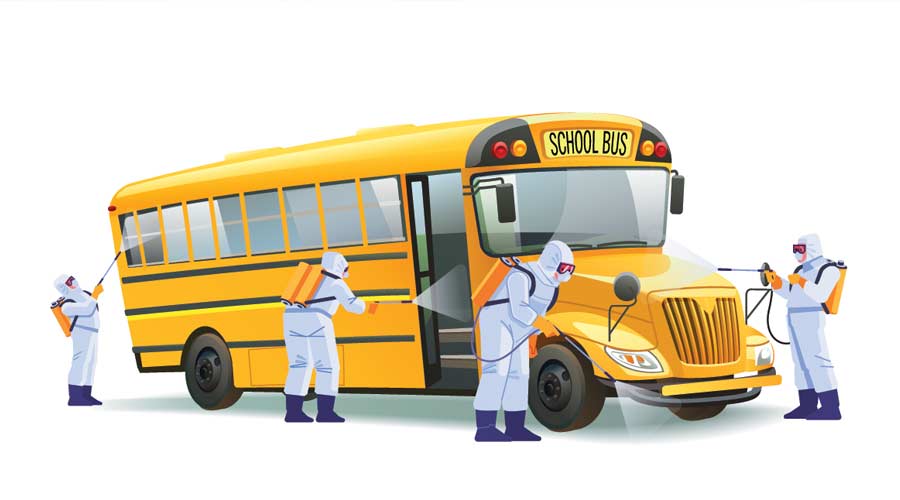
Contributed by Janitorial Manager
Engaging students through clean schools can have a positive impact on entire communities. Here’s how.
Clean schools are a vital part of the learning process. Most individuals function better in a clean, welcoming, environment and students in the classroom are no exception. As schools strive to maintain cleanliness amidst the aftermath of the COVID-19 pandemic, it’s no wonder that sanitary buildings and classrooms appear more attractive and inviting than those rooms that are less clean. Not only do staff and students feel better in a clean and healthy environment, but parents also gain peace of mind when they know their children are in hygienic spaces.
Yet, the impact of a clean classroom extends beyond shiny desks and chairs. Just as cleaning crews perform better when they feel appreciated and cared for, students are more likely to be engaged when they are in a clean environment. When students remain committed to going to school, and doing well, then the entire community benefits as well.
1. Students Feel Safer.
With the number of sicknesses going around, students feel more comfortable going to school when they know their surroundings and the high touch areas within them have been disinfected prior to their exposure.
2. Lower Dropout Rate.
If classrooms aren’t regularly disinfected, germs become more widespread leading to increased infections and more sick days. In the report, How Dirty Is Your Child’s School?, the ISSA points out that “chronically absent students are 7.4 times more likely to drop out of school.” However, with clean measures put in place, coupled with frequent disinfecting, the chance of infection spreading among student bodies lowers lessening the amount of sick time used and thus less chronic absences.
3. More Learning Time.
Even for those students who are engaged, cleanliness is essential for keeping kids in the classrooms. The same ISSA report mentioned above also notes that approximately 60 million school days are lost each year due to colds and the flu. That’s a high number! As stated previously, since disinfecting surfaces can kill many of the germs and bacteria that cause colds and the flu, your cleaning team’s efforts can help kids stay in school.
4. Cleaner Air.
Your cleaning crew can do a lot to help keep classroom air clean and healthy. According to the Environmental Protection Agency (EPA), approximately 1 out of every 10 children has asthma. Indoor dust and chemical cleaners are just two common asthma triggers. With regular cleaning and the use of environmentally-friendly cleaning products without harsh compounds, asthma triggers can be lessened.
5. More Engaged Teachers.
It’s not hard to imagine that clean schools lead to more involved teachers and, thus, more engaged students. Teaching isn’t an easy profession, and the more teachers can focus on students rather than being worried about the spread of germs, dirty floors, and smudged windows, than a higher quality of learning can be achieved.
Student engagement is more critical than ever, and it’s clear to see that clean schools can play a big role in obtaining higher engagement levels. Cleaning teams can also take pride in the fact their work plays a direct role in that success.

 The Down and Dirty on Cleaning in Virus Season
The Down and Dirty on Cleaning in Virus Season How Surfactant Use is Expanding in Commercial Cleaning
How Surfactant Use is Expanding in Commercial Cleaning Operational Excellence Series 2025: Labor Strategies
Operational Excellence Series 2025: Labor Strategies